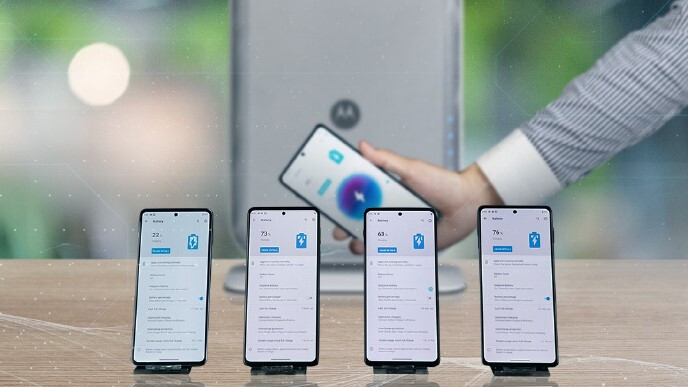The future is now, as some folks say. By the speed at which tech is improving, we might soon have one more science-fiction concept become an actual reality. How many times have you wished for a life without wires? I know I certainly have more than once.
At the beginning of 2021, Xiaomi announced it’s working on a new way for people to charge their devices—a truly wireless way. The Chinese tech giant called its innovation the 5W Mi Air Charge Technology.
It works through a base station with 144 antennas that shoot out millimeter waves. Those waves then reach 14 antennas embedded inside your phone, which convert them into energy used to charge the device’s battery.
Motorola’s attempt at over-the-air charging
However, around the same time Xiaomi announced their 5W Mi Air Charge Technology, a leak revealed another player working on a similar project—Motorola. Motorola’s attempt was not as advanced as that of its competitor then, but now it has come out with a vastly improved version of over-the-air charging.In its first attempt, Motorola could only muster up a maximum range of 80-100cm. There were also some issues with the waves being blocked by objects and different materials.
Motorola claims to have achieved a maximum range of 3m thanks to a phased array of 1600 antennas! On top of that, it seems the signal can no longer be blocked, or at least is significantly more difficult to do so.
In a released teaser video, Motorola showcases this new-gen true wireless charging tech. In it, we can see the phone automatically starts to charge once it gets in range, and that it can juice up a total of four phones simultaneously. The charger supposedly has a 100-degree area of coverage.
When will true wireless charging become accessible?
Motorola has not given any other substantial information on the next-gen true wireless charger as of yet, which leaves some questions hanging in the air. For example, how much electricity will the charger use up? The current wireless chargers that we are all familiar with use quite a bit more than the conventional wired options. There is also no clearly stated wattage or maximum speed for charging a whole phone battery.Until this product becomes available for mass production, there will always be unanswered questions. For the time being, I’m just excited about the possibilities hinted at by this glimpse in the future.

